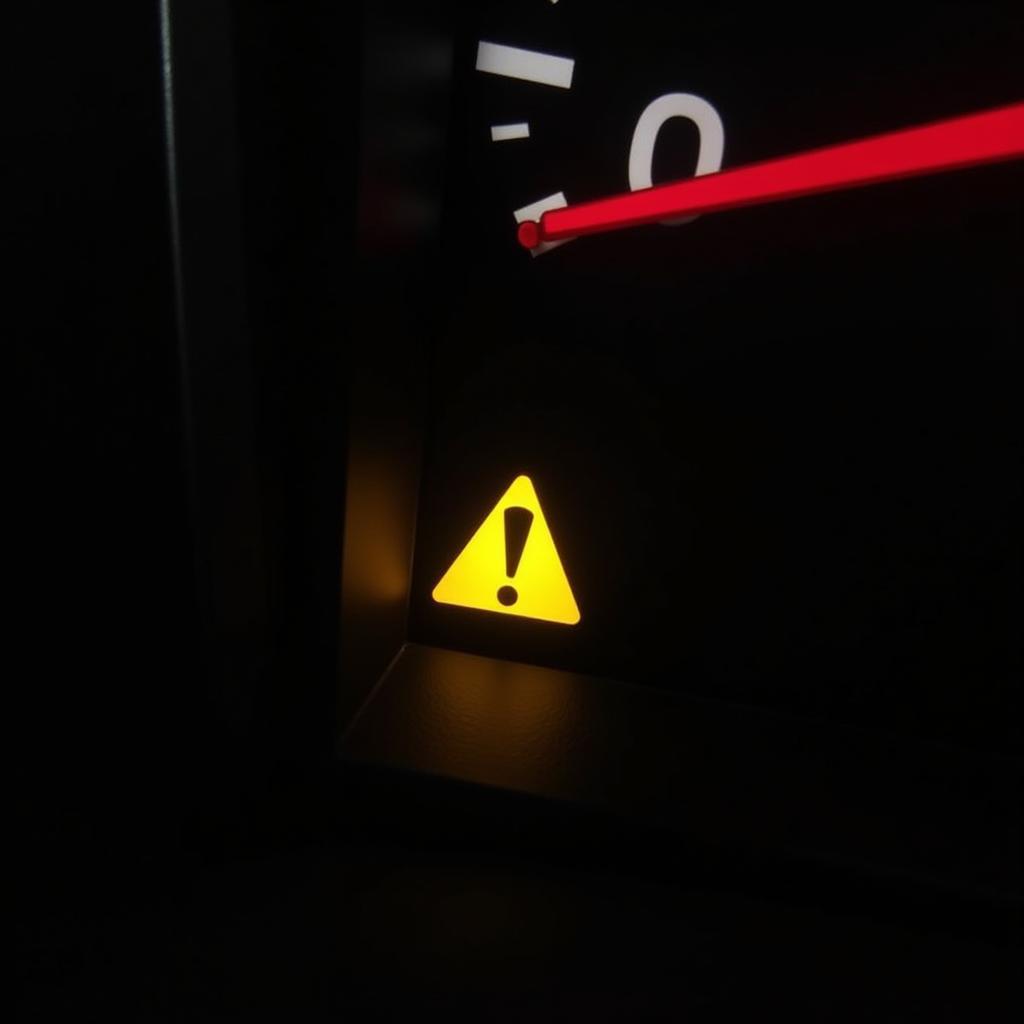The dreaded brake pad warning light on your BMW dashboard can be a nuisance, but it’s crucial not to ignore it. While it often signals worn brake pads, it can also indicate other issues within your braking system. This comprehensive guide will walk you through understanding, diagnosing, and resetting your BMW brake pad warning light, empowering you to take control of your car’s maintenance.
Understanding Your BMW Brake Pad Warning Light
Your BMW is equipped with a sensor that monitors the thickness of your brake pads. This sensor, usually a small wire embedded within the pad material, triggers the warning light on your dashboard when the pad thickness reaches a critically low level. This system ensures you’re alerted about brake pad wear before it compromises your safety.
 BMW Brake Pad Warning Light
BMW Brake Pad Warning Light
However, the warning light doesn’t always mean you need new brake pads immediately. It acts as an early warning system, giving you ample time to schedule maintenance.
Common Causes of a BMW Brake Pad Warning Light
While worn brake pads are the most common culprit, several other factors can trigger the warning light:
- Worn Brake Pad Sensor: The sensor itself may be faulty or damaged, triggering a false warning.
- Low Brake Fluid: Insufficient brake fluid can also trigger the warning light.
- Malfunctioning ABS System: Problems with the Anti-lock Braking System (ABS) can interfere with the brake pad sensor readings.
- Electrical Issues: Wiring issues or a faulty control module can also trigger a false warning light.
How to Reset Your BMW Brake Pad Warning Light
Before attempting to reset the warning light, it’s essential to diagnose the root cause. If you’re unsure about any step or suspect a problem beyond worn brake pads, consult a qualified BMW mechanic.
If you’ve recently replaced your brake pads or confirmed that the warning light is due to a minor issue, you can try the following reset methods:
Method 1: Driving Reset
This method often works for minor sensor glitches.
- Start your BMW and begin driving at a moderate speed.
- Gradually accelerate to around 30-40 mph.
- Gently apply the brakes, bringing the car to a slow and controlled stop.
- Repeat this process a few times.
- If the sensor resets, the warning light should turn off.
Method 2: Manual Reset Using a Diagnostic Tool
This method requires a specialized BMW diagnostic tool, often available at auto parts stores or online.
- Connect the diagnostic tool to your BMW’s OBD-II port, usually located under the dashboard on the driver’s side.
- Turn on the ignition but do not start the engine.
- Follow the tool’s instructions to access the brake system module.
- Locate the “brake pad wear” or “service reset” function.
- Select the option to reset the warning light.
- Once the reset is complete, disconnect the tool and start your BMW to confirm the light is off.
Important Note: The exact menu options and steps may vary slightly depending on the diagnostic tool and your BMW model. Refer to the tool’s user manual for specific instructions.
“Remember, while resetting the brake pad warning light yourself can seem tempting, it’s crucial to address the underlying issue. Regularly inspecting your brakes and seeking professional help when needed ensures your safety and prevents costly repairs down the road.” – Michael Schmidt, ASE Certified Master Technician
BMW Brake Pad Warning Light Reset FAQs
Q: Can I still drive my BMW with the brake pad warning light on?
A: While you can technically drive a short distance, it’s not recommended. Driving with worn brake pads significantly reduces your stopping power, putting you and others at risk.
Q: How often should I replace my BMW brake pads?
A: Brake pad lifespan varies greatly depending on driving habits and conditions. As a general guideline, BMW recommends inspection every 10,000-15,000 miles.
Q: Can I reset the BMW brake pad warning light without replacing the pads?
A: Resetting the light without addressing the root cause is not advisable. If the pads are worn, replacing them is crucial for safety.
Q: Why is my brake pad warning light still on after replacing the pads?
A: The warning light may need a manual reset using a diagnostic tool or the driving reset method.
Q: Can I use any diagnostic tool to reset my BMW brake pad warning light?
A: While some generic tools might work, using a BMW-specific diagnostic tool is recommended for optimal compatibility.
Conclusion
Understanding your BMW’s brake pad warning system is crucial for safe and responsible driving. By following this guide, you can diagnose the issue, reset the warning light, and keep your BMW’s braking system in optimal condition. Remember, when in doubt, consulting a qualified BMW mechanic ensures the problem is correctly identified and addressed, providing peace of mind on the road.
